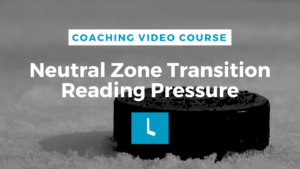I imagine it’s back to the rink for many of you this week, as the spring training season is upon us. As I am in youth hockey development full time, I realize that there are a million choices when it comes to spring and summer hockey programs. I’ve come up with three quick and easy ways to confirm you are getting value for money at each hockey camp.
1) Does the coach “speak” to players, or just “bark” directions? Coaching is part art, and part science. It’s teaching. It’s knowing when to give direction, and knowing when to say nothing at all. Coaches, for many reasons, have their own style and approach to running a practice or hockey camp. After watching some of the game’s most respected coaches I know one thing is for certain. A coach’s impact is exponentially greater when he or she takes 30 seconds to skater over to a player in practice and give some kind of feedback in a conversational volume, than standing at center ice barking directions to kids that can’t hear the direction in the first place. That said, there is often a need to organize a drill from one central location. My position is that I encourage you as a hockey parent to watch the coach at times during practice and assess their ability to communicate one on one with players during the course of a drill. At the 2011 Prep Camp I don’t remember Ryan Walter or Mike Johnston ever raising their voice while on the ice. That’s my point.
2) What is Work to Rest Ratio? Hockey is an anaerobic sport, that requires a strong aerobic base, and the ability to perform under pressure at high intensity for short periods of time. After a 40 second shift, a player needs roughly 2 minutes to recover properly. That ratio of work to rest is roughly 1 to 3-4. If there are 20 kids on the ice, are at least 4 or 5 moving at any given time? Or are 19 players watching 1 player execute a drill? Creative coaches get many players moving at once, maximizing ice time, and creating game like demands on the body. You’ll often see us utilize 4 nets and virtually every square foot of ice. We love to keep players moving and engaged.
3) Do the players leave the rink or camp talking about their experience away from the ice as well as on the ice? The life experience players get from the game of hockey is very unique. After all, sport so often imitates life. Meeting new people, pushing comfort zones, and getting exposure to new cultures and perspectives will make your hockey player a more well rounded, open minded, and intelligent athlete. I particularily enjoy watching the ping pong tournaments in the dorms at Prep Camp that often involve players from opposite sides of the continent, and even the world.






